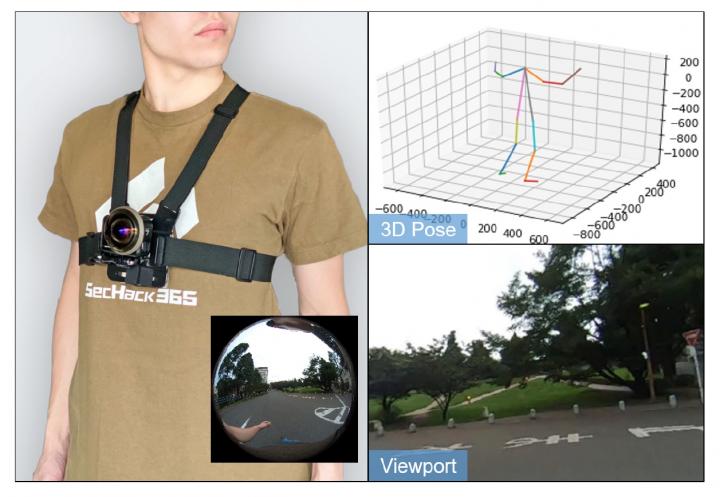Conventional motion capture systems in dedicated studios usually rely on several
A group of researchers led by Hideki Koike fromTokyo Tech is introducing a new motion capture system that consists of a single ultra-wide fisheye camera mounted on the user's chest. Their design not only overcomes the lack of space in existing systems, but is also cost effective.

The system, called MonoEye, can capture the user's body movements as well as their perspective, or "viewport."
Our ultra-wide fisheye lens has a 280-degree field of view and can capture the user's limbs, face, and surrounding environment.
Research text
To provide reliable multimodal gripmovement, the system was developed with three deep neural networks capable of evaluating three-dimensional body posture, head posture and camera posture in real time.
Researchers have already trained these neural networks withusing a vast dataset of 680,000 images of people with different body shapes, clothing, actions, backgrounds and lighting conditions, as well as 16,000 frames of photorealistic images.
The researchers speculate that in the future, the chest camera could be turned into an everyday accessory such as a tie clip, a brooch, or sports equipment.
Read also
The annual mission in the Arctic has ended and the data are disappointing. What awaits humanity?
On day 3 of illness, most COVID-19 patients lose their sense of smell and often suffer from a runny nose
Scientists have found out why children are the most dangerous carriers of COVID-19